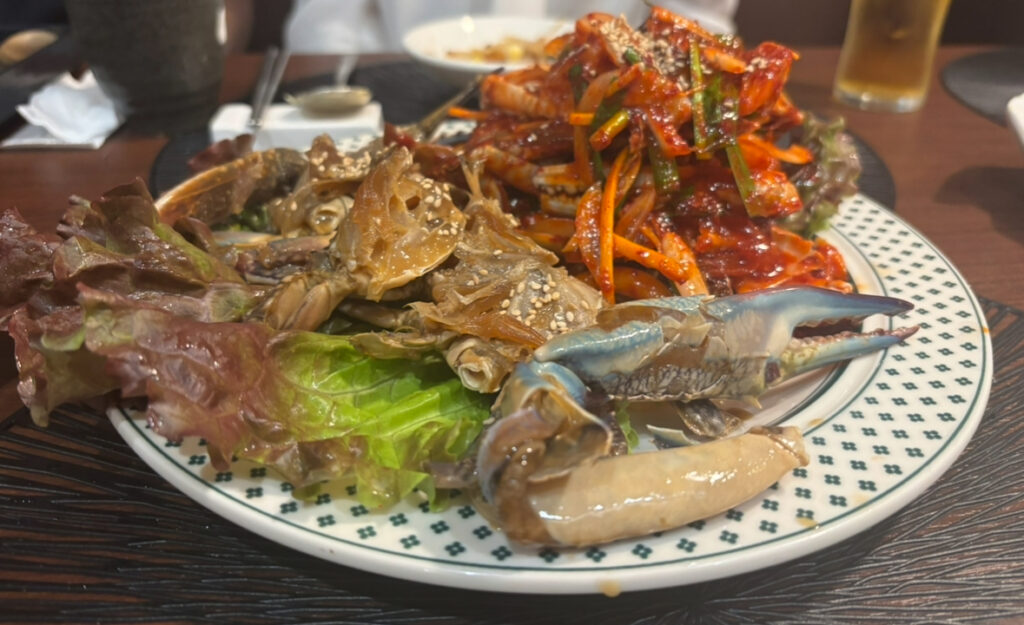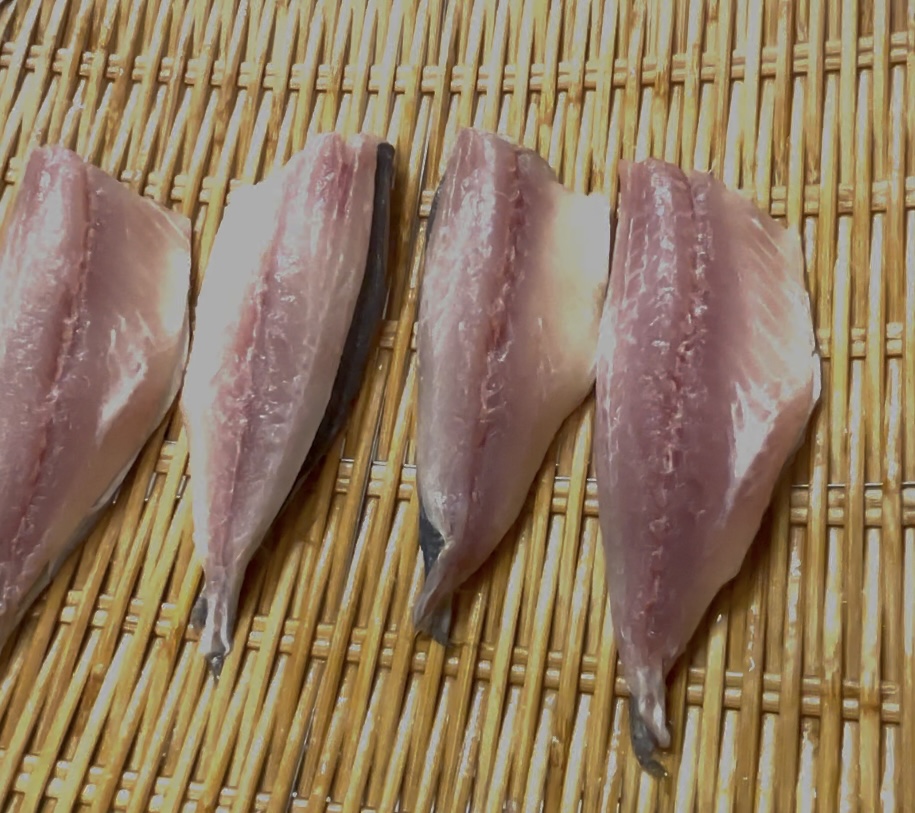
After spending a total of about one month in Korea,
I’ve decided to write an article about Korean seafood cuisine.
For this, I’ve collaborated with my friend who studied abroad at Seoul National University and spent many years living in Korea.
Thanks to his insight, I hope to share an authentic and in-depth look at how seafood is enjoyed in Korean culture.
Contents
- 1 Why Korean Seafood is So Loved Worldwide
- 2 Top 12 Must-Try Korean Seafood Dishes
- 3 Korean Sashimi Culture: What is Hoe (회)?
- 4 How Korean Sashimi Differs from Japanese Sashimi
- 5 Special Spotlight: Jeju Island’s Grilled Cutlassfish
- 6 Special Spotlight: Busan’s Signature Seafood Hotpots
- 7 Hidden Gem: Hatahata (Sandfish) in Korean Cuisine
- 8 Why Thick Korean Seaweed (Gim) is a Flavor Bomb
- 9 Popular Korean Seafood Stews & Soups
- 10 How to Prepare Korean Seafood at Home
- 11 Modern & Traditional Korean Seafood Recipes You Can Try Today
- 12 Where to Eat Korean Seafood in Japan
Why Korean Seafood is So Loved Worldwide
Korea, a peninsula surrounded by the sea on three sides, boasts a rich and diverse seafood culture. From spicy stews to raw sashimi-style dishes, Korean cuisine embraces the ocean’s bounty through bold flavors, fermented techniques, and unique serving styles. Whether grilled, boiled, braised, or dried, seafood plays a central role in the everyday Korean meal.
Top 12 Must-Try Korean Seafood Dishes
- 1. Hoe (회): Korean-style raw fish, often served with spicy vinegar-based sauces.
- 2. Haemul Jeongol: A spicy seafood hotpot with shrimp, crab, squid, and vegetables.
- 3. Hoedeopbap: A sashimi rice bowl mixed with veggies and spicy gochujang sauce.
- 4. Ojingeo Bokkeum: Stir-fried spicy squid, a popular side dish and bar food.
- 5. Haemul Pajeon: Crispy green onion pancake with various seafood mixed in.
- 6. Jjamppong: Spicy seafood noodle soup with pork, clams, and chili oil.
- 7. Guljeon: Egg-battered and pan-fried oyster fritters.
- 8. Kalchi Gui: Grilled cutlassfish, especially famous in Jeju Island.
- 9. Haemuljjim: Steamed spicy seafood platter, often enjoyed in Busan.
- 10. Hatahata Jeotgal: Fermented sandfish with deep umami and saltiness.
- 11. Roasted Gim: Thick Korean seaweed brushed with sesame oil and salt.
- 12. Korean Sashimi (Hoe): Thinly sliced raw fish eaten with spicy dipping sauces and leafy wraps.
Korean Sashimi Culture: What is Hoe (회)?
Hoe (pronounced “hwe”) is the Korean term for raw fish dishes. Unlike Japanese sashimi, Korean hoe is often served with perilla leaves, garlic, and ssamjang (or cho-gochujang), and is meant to be eaten wrapped in lettuce or sesame leaves. Common types of fish include flounder (광어), rockfish (우럭), and snapper (도미).
How Korean Sashimi Differs from Japanese Sashimi
- Sauces: Korea uses spicy vinegar gochujang, while Japan uses soy sauce with wasabi.
- Texture: Korean hoe emphasizes freshness, often served minutes after slicing live fish.
- Serving Style: Koreans often follow raw fish with maeuntang (spicy fish soup), while Japanese meals highlight the simplicity of sashimi.
Special Spotlight: Jeju Island’s Grilled Cutlassfish
Jeju Island’s Kalchi (cutlassfish) is prized for its fatty, tender flesh. Grilled Kalchi Gui is a beloved local specialty, often served whole with crispy skin and moist meat. Another popular dish is Kalchi Jorim—braised cutlassfish with radish in a sweet and spicy soy-based sauce. Jeju markets offer some of the freshest kalchi in Korea.
Special Spotlight: Busan’s Signature Seafood Hotpots
Busan, Korea’s coastal gem, is famous for Haemultang (spicy seafood stew) and Haemuljjim (steamed seafood in spicy sauce). These dishes often include crab, mussels, squid, and octopus. Particularly in Haeundae, you’ll find rows of restaurants serving bubbling pots brimming with the ocean’s finest.
Hidden Gem: Hatahata (Sandfish) in Korean Cuisine
Known as 도루묵 (dolmuk) or simply small seasonal fish, Hatahata is often grilled or fermented. While Japan prepares it simply salted and grilled, Korean cuisine uses it in jeotgal (salted fish sauces) and occasionally in hongeo-style fermented forms. It’s a humble yet flavorful fish, treasured in winter.
Why Thick Korean Seaweed (Gim) is a Flavor Bomb
Unlike thin Japanese nori, Korean gim is thicker, roasted with sesame oil and salt. It’s not only used for wrapping rice (as in gimbap), but also served as a crunchy, savory side dish (banchan). The texture is crisp, and the rich roasted flavor makes it addictive. Premium gim often comes in gold-labeled packs and is a popular gift item.
Popular Korean Seafood Stews & Soups
- Al Tang: Spicy stew with cod roe and vegetables.
- Haemul Sundubu Jjigae: Soft tofu stew with mixed seafood.
- Eomuk Guk: Light fish cake soup with radish and green onion.
How to Prepare Korean Seafood at Home
To recreate Korean seafood dishes, stock up on essentials like anchovy-kelp broth (yuksu), gochugaru (Korean red chili flakes), gochujang, sesame oil, garlic, and soy sauce. For sashimi-style dishes, ultra-fresh fish is key. Always clean and slice your seafood with care, and balance spicy flavors with fresh herbs and greens.
Modern & Traditional Korean Seafood Recipes You Can Try Today
Whether you’re following Maangchi’s classic recipes or experimenting with Kimchimari’s home-style twists, Korean seafood is versatile. You can try making tuna pancakes, squid stir-fry, or even seafood fried rice. Fermented or salted seafood like jeotgal adds depth to stews and rice bowls alike.
Where to Eat Korean Seafood in Japan
In Tokyo, Uber Eats offers delivery from places like 【회덮밥】フェドッパプ, specializing in Korean-style sashimi bowls (hoedeopbap). It’s an easy way to experience the fusion of Korean raw fish culture with Japanese dining convenience.


